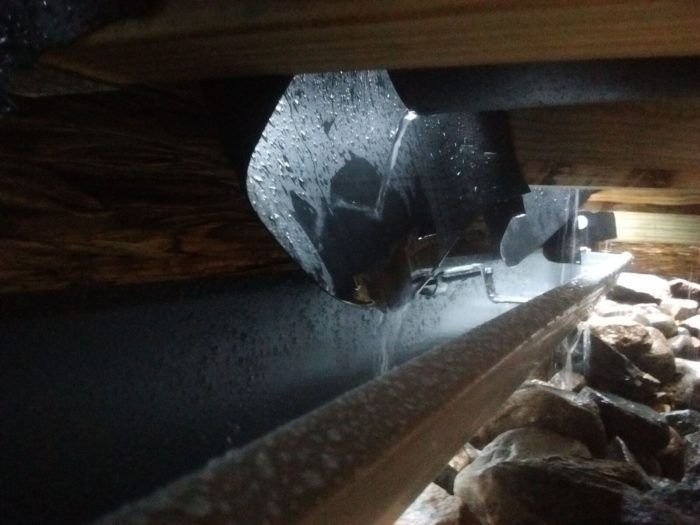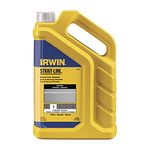Site-Built Deck Drainage System
EPDM membrane makes an easy-to-install, cost-effective drain system to create dry space beneath.

Derek and Nick fabricated a deck drainage system from a roll of 45-mil EPDM. We used a modified version of the system I wrote about in an FHB article a while back.
The FHB House has a walk-out basement under the deck. We poured a patio slab mirroring the deck above, so installing a deck drainage system is a simple upgrade that will pay dividends by keeping the patio dry.
Before the guys got to the installation, I made a pattern for cutting the EPDM sheets using a piece of plastic so that if there were any errors, they would be made on inexpensive plastic rather than the EPDM.

And I installed a slopped gutter on the inside edge of the 12-in.-tall rim beam.

The guys used scissors to cut the slight arc along the house side of the EPDM sheet and scalloped edge along the rim-beam side. Then they snapped diverging lines on the tops of the sheets to mark the center of the deck joists for aligning when the sheets were splayed out over the joists.

Before installing the main sheets of EPDM, they installed diverter pieces of EPDM on the face of the rim beam in each joist bay  using cap staples. The diverters ensure that heavy flows of water out of the drainage troughs between joists will be channeled into the gutter.
using cap staples. The diverters ensure that heavy flows of water out of the drainage troughs between joists will be channeled into the gutter.
The EPDM sheets were then placed and cap-stapled along the top of each joist.

The EPDM is cut wide enough so that it wraps up the house wall by at least 8 in. 
 In order for water to flow over the deck ledger, we ripped and fastened tapered pressure-treated wood strips.
In order for water to flow over the deck ledger, we ripped and fastened tapered pressure-treated wood strips.
Metal flashing was installed over the EPDM along the ledger to cover the view strip between the siding skirtboard and the decking. The metal also helps protect the EPDM along this vulnerable area.
Fine Homebuilding Recommended Products
Fine Homebuilding receives a commission for items purchased through links on this site, including Amazon Associates and other affiliate advertising programs.

FastenMaster Screw Bolt Fastening System

Standard Marking Chalk

N95 Respirator






















































View Comments
One concern I've had about these systems is whether the bottoms of deck boards would stay too wet possibly resulting in premature rot and cupping. Some detritus will make its way between the boards and into the troughs where puddles may form. These puddles along with the air flow minimization resulting from the membrane installation below the deck boards would potentially create a very moist environment.
I guess I'll find out as I've installed a similar system on two decks now. I did space the deck boards a bit wider in hopes of increasing air flow and preventing clogging.
reply to aalden:
Your approach to similar systems is the same as mine - spacing boards by a full 1/4 in. to help airflow.
On this deck we will use a composite decking with a long track record of problem-free performance. If I were using a wood decking susceptible to decay I probably wouldn't install an underdeck drainage system.
Do you recommend using an EPDM draining system under a hardwood like IPE? I'm concerned about moisture and rot.
You can use any underdeck drainage system with Ipe. Just gap the boards properly and you'll be fine. I have a 25 year old ipe deck on my own house that's nearly touching the ground and the boards are fine. Other woods may not be as forgiving of moisture as Ipe though. Climate has a lot to do with it too. The drainage system will get most of the water away. The only remaining water will be what clings to the boards and membrane - kind of like the water left after a shower. If weather patterns in your area are like on the east coast where it rains one day and the next is windy and dry - then you'll be fine. But if you're along the gulf coast or Pacific Northwest then the dampness lingers for days and the rainwater won't dry as quickly. I can't say how wood would perform in those areas over a membrane.
why are there rocks in the deck?
There are stones under one portion of the deck. They are below the joists by a foot though the photos make them appear closer.
Hi Mike,
Do you have any experience using hidden faster systems which require the screw to be driven at an an angle through the membrane? Any concerns about getting an adequate seal around the fasteners in this case, without the use of butyl tape?